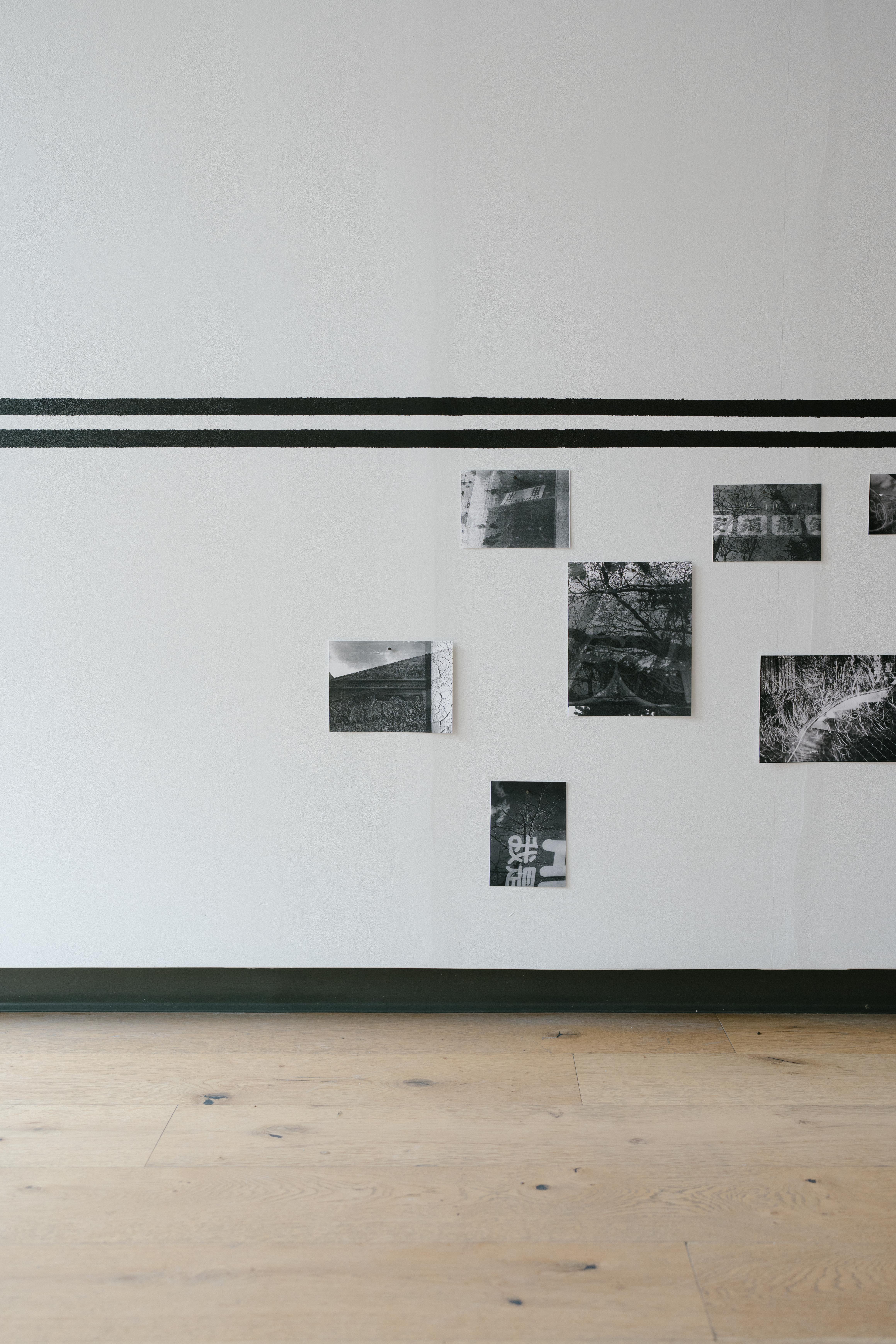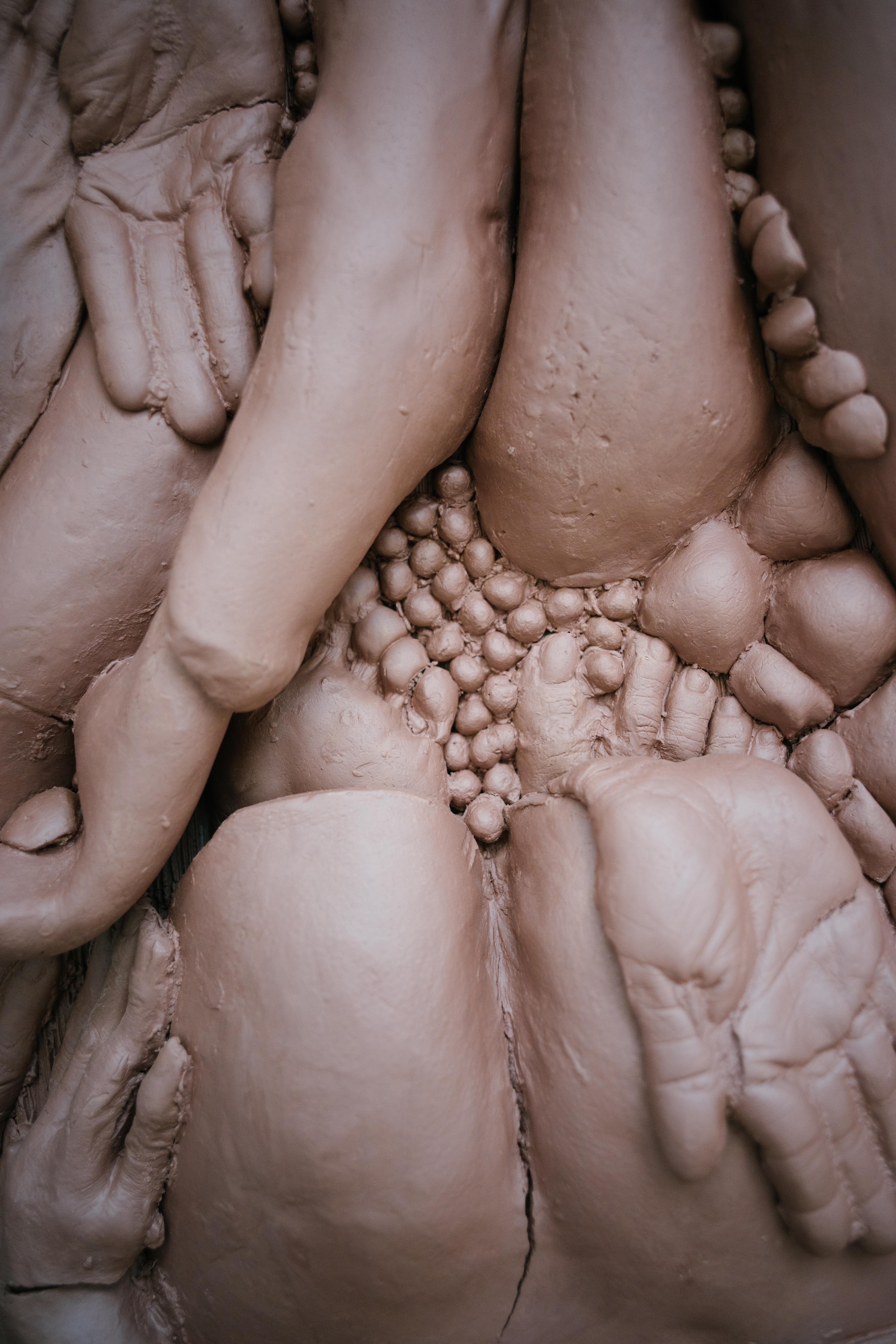Main Space Exhibition /
Interior/Periphery
Curated by Christina Yao
Artwork by
Kylie Fineday, Tomo Ingalls, Raeann Kit-Yee Cheung
June 30 - August 12, 2023
Opening Reception /
June 30, 7-9PM, 2023 @ The New Gallery











Responding to a recent lineage of exhibitions and artist residencies engaging with Chinatown at The New Gallery, which occupies a unit in Calgary Chinatown’s historic Canton Block, curator Christina Yao reflects on her own relationship with Chinatown as a recent Chinese immigrant, which is marked by a curiously twinned sense of both belonging and alienation. Interior/Periphery invites Kylie Fineday, Tomo Ingalls and Raeann Kit-Yee Cheung, artists of Asian and Indigenous backgrounds, to consider the complexities of being both inside and outside—whether of a community, a place, or one’s own body. Interior/Periphery is interested in the topography where “within” and “without” overlap and intertwine, and the works presented pursue this “in-between” in clay, beading, performance and photography.
Interior-Periphery
Essay by Christina Yao and Steph Weber
It is upon entering Calgary’s Chinatown, a place ostensibly directly descended from China, that Christina Yao feels a peculiar sense that she does not belong. Despite the fact that she grew up in Canton, and that she is fluent in both Mandarin and Cantonese, allowing her to communicate seamlessly with shop owners and restaurateurs, something feels off; Chinatown, with all its neon pagodas and theme park reds and yellows, still carries the atmosphere of a kind of frozen-in-imperial-time appeal to touristic sensibilities. This can be alienating to someone who knows what present-day China looks and feels like, something that complicates her always-present empathetic kinship with those who have relied and still rely on this community to navigate the discriminatory bureaucracy and social isolation of immigration to Canada.
For Yao, this experience of being both inside and outside is something she also covets as a serial traveller who often prefers new environments. She comments that “there’s always something new to learn.” This observation is a familiar one, and not just in anecdotal accounts of accumulating experiences for personal growth. Straddling the line between “insider” and “outsider,” for example, is a central tool of ethnographers, who find that too much inside knowledge of a community impedes objective study, while complete alienation may mean the impossibility of integration, and with it, piecemeal involvement in cultural practices.
Interior/Periphery suggests that if it’s possible to “straddle” such a line between inside and outside, this line must be a place—and that this show, and the works in it, exist in the “place” of this line, an interstitial point embodied by the solidus that divides the two words in the title. Asking the three artists here to reflect on this line, this overlapping interrelationship between locations, states or selves, Yao seeks a topography of the in-between, one made stronger by the diversity of perspectives at play.
Tomo Ingalls’ raw clay pieces, exercises in “finding” what her body is, are molded from her own body parts—fingers, breasts, and feet are signifiers that become abstracted through repetition as they act as building blocks for hulking masses or towering vessels. The conglomerated body parts that form these shapes—the drooping fingers adorning Wedding Cake (2022) and the hands and feet compressed into Packing (2023) —isolate the line between body and material, a line that Tomo’s work both emphasizes and blurs by continually pushing against. Here, a bodily selfhood is externalized into material, which retains traces of the instance of making. In Smushing (2022), a similar moment of contact is dramatized—we see the reciprocity between body and page as written language is forced to take the form of bodily trace.
The preoccupation of Interior/Periphery with the “between” and the “both” calls back to evocative intellectual engagements with duality. In particular, I’m reminded of the concept of “double consciousness,” a term that, though probably coined by Emerson, is almost universally associated with its use by W.E.B. Du Bois to describe the peculiar self-perception experienced by racialized people, where the understanding of oneself according to the logic of racist society sits uncomfortably alongside subjective selfhood. Something like this is happening in each artist’s pieces, where multiple codified identities seem to exist alongside and within one another, embodied in both material and spirit.
The beads that Kylie Fineday uses in To The River (2023) are sourced from Old Man River in Lethbridge, gesturing at the littoral zone of the shore, posited by some as spatial metaphor for cross-cultural “contact.” Fineday’s intention to return these unfired clay beads to their origin point, where they will dissolve, also problematizes their material state. While the clay takes the form of beads, it occupies a kind of in-betweenness, an always temporary form. Also in the show are some of Fineday’s glass beadworks, the text ribbon True story (2019) and the beaded felt Mask (2023), which recalls Frantz Fanon’s famous interpretation of the familiar ”double consciousness” concept in Black Skin, White Masks (1967), where the “mask” is a symbol for the contortive art of conforming.
Raeann Kit-Yee Cheung’s An Outsider of Outsiders (2023) transposes Yao’s question onto a geographical scale, and returns the exhibition’s focus to Yao’s own reflections on Chinatown. Like Yao, Cheung holds a mixture of emotions toward Chinatown, feeling an insecurity that permeates her sense of connection to both China and Canada. Her monochromatic double-exposures, evidence of an exploration of both place and self, are sprinkled along the suggestion of a map of Calgary, which is recognizable only by the Bow River at the point that it bisects around Prince’s Island, and by the two thin lines, railroad tracks, framing it at the southern point. The pattern mapped by these scattered photographs loosely follows the historical locations of Calgary’s three historical Chinatowns, and the photographs, each of which includes not traces of incomplete halves, but two fully articulated, coexisting images, seem to stand in for the possibility of multiple consciousnesses.
















Kylie Fineday is a nehiyaw (Plains Cree) artist and curator from Sweetgrass First Nation, Saskatchewan. Currently based in Lethbridge, Alberta, Kylie completed the BFA-Art Studio program at the University of Lethbridge in 2020 with great distinction, an honours thesis, and the Faculty of Fine Arts Gold Medal. Kylie’s art practice often focuses on themes of personal identity and family history, as well as addressing social issues and injustices, particularly those affecting Indigenous peoples in Canada. Kylie’s material practice is multidisciplinary, and includes drawing, photography, performance, sculpture, and textiles such as sewing and beadwork. Fineday has exhibited work in various institutions in Lethbridge, Alberta, and has also worked on multiple curatorial projects within the community.


















Tomo Ingalls is currently a long-term artist in residence at Medalta. Her intensive clay study started in 2014 at Gloucester Pottery School. She trained as a potter at the New Brunswick College of Craft and Design and sold her work through galleries in the maritime provinces. Her curiosity took her from New Brunswick to Calgary to earn a Master of Fine Arts degree in Craft Media from Alberta University of the Arts. Her practice connects daily activity, the body and performance, proposing new ways to express intangible emotions.
Christina Yao is a multi-disciplinary artist based in Calgary, focusing on photography, sculpture, video, installation, performance art, and, most recently, curation. Born and raised in China, she has lived and worked in various countries including the U.S., Colombia, and Canada, which have significantly influenced her creative practice. She is currently completing her BDes in Photography at the Alberta University of the Arts, where she was the recent recipient of the Teatro Group Travel Scholarship and The M. James and Elsie Mathieson Scholarship. She has also participated in the Exposure Studio 2.0 program and exhibited her work at The Marion Nicoll Gallery, TRUCK Contemporary Art, and cSPACE.
Steph Weber is a writer and researcher. She is a PhD Candidate in the Department of Art History at Concordia University, where her research is supported by a Joseph-Armand Bombardier CGS Doctoral Award. Her writing can be found in Utopian Studies, the Journal of the Society for the Study of Architecture in Canada, Esse arts + opinions and RACAR: Revue d’art Canadienne.
Documentation by Danny Luong
